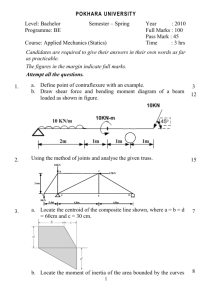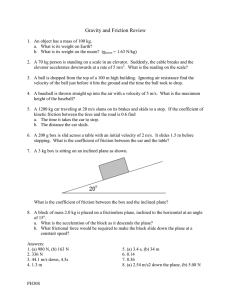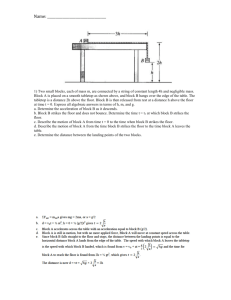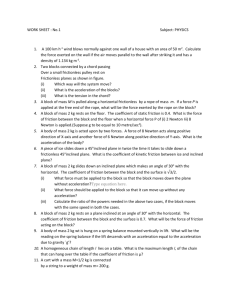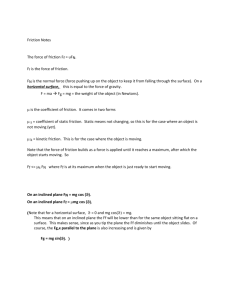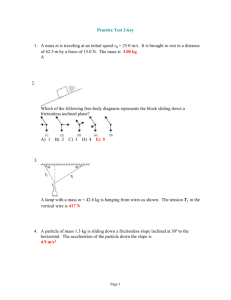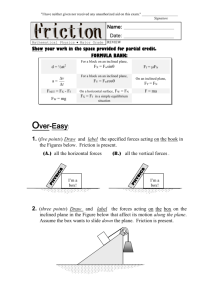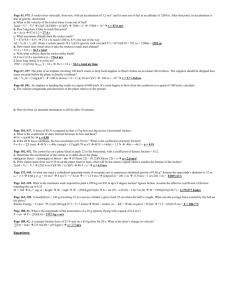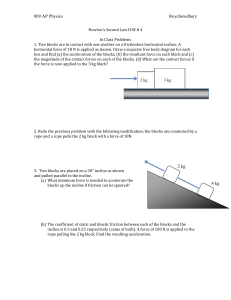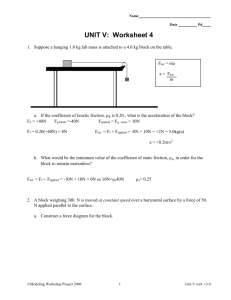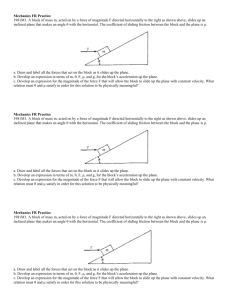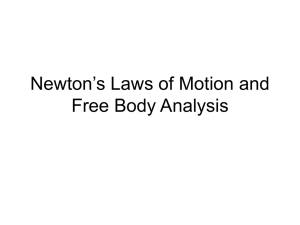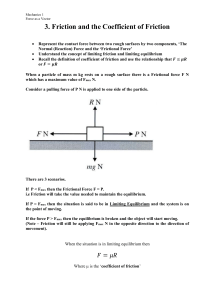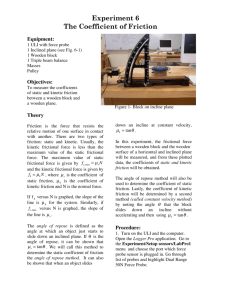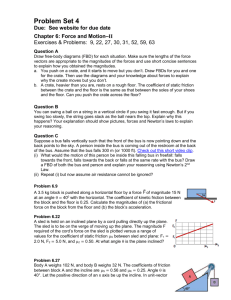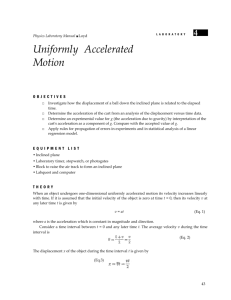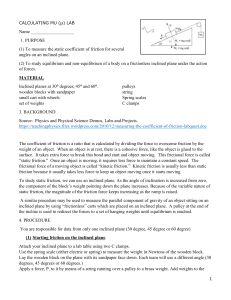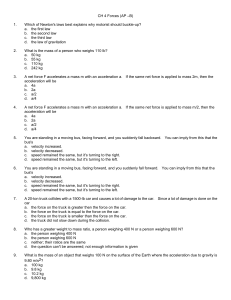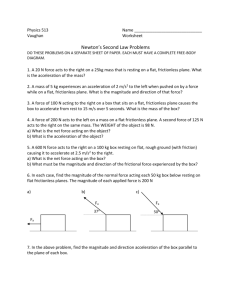11th grade physics
advertisement
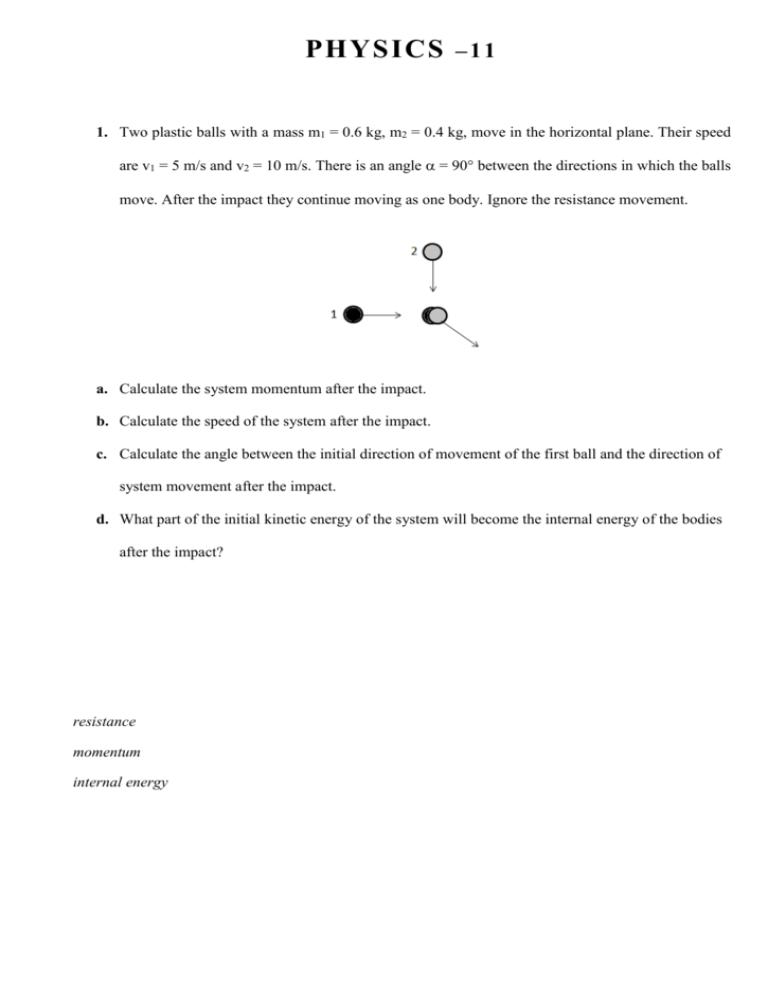
PHYSICS – 1 1 1. Two plastic balls with a mass m1 = 0.6 kg, m2 = 0.4 kg, move in the horizontal plane. Their speed are v1 = 5 m/s and v2 = 10 m/s. There is an angle = 90 between the directions in which the balls move. After the impact they continue moving as one body. Ignore the resistance movement. a. Calculate the system momentum after the impact. b. Calculate the speed of the system after the impact. c. Calculate the angle between the initial direction of movement of the first ball and the direction of system movement after the impact. d. What part of the initial kinetic energy of the system will become the internal energy of the bodies after the impact? resistance momentum internal energy 2. Body of 5 kg weight is slowly moved vertically to a height of 1.5 m above the ground for the first time. The same body is slowly and at constant speed moved horizontally on the ground surface for the second time. The distance is equal to the height. The coefficient of friction is 0.6. Acceleration of gravity g = 10 m/s2. Ignore air resistance and body measurement. a. Calculate the work done by moving vertically the body. b. Calculate the work done by moving the body horizontally on the ground surface. c. When (moving vertically or moving the body horizontally) and how many times there was used more energy? d. How much time does it take for the body which is moved vertically to fall down on the ground surface? e. What kinetic energy will have the falling body near the grond surface? constant speed ground surface coefficient of friction 3. The car which mass is 1500 kg starts to move on a horizontal highway at a 1 m/s2 acceleration. Coefficient of friction is 0.02. Acceleration of gravity g = 10 m/s2. a. Calculate the work done during the first 10 seconds. b. Calculate the average power during the first 10 seconds. c. What is the instantaneous power at the 10th second? d. At the end of the 10th second the engine is switched off. What is the total distance driven by the car before it stopped? friction instantaneous power 4. The body which mass is 100 g is placed on inclined plane which is inclined at an angle of 35°. Acceleration of gravity g = 10 m/s2. a) b) c) d) a. Calculate the coefficient of sliding friction when it is known that the speed of the body is 1 m/s after it slides 60 cm. b. Calculate the time during which the body slides off the plane when the plane starts to move at a1 = 0.8 m/s2 acceleration. Plane length is 2 m. c. Inclined plane is in the elevator that moves up at a2 =20 m/s2 acceleration. Calculate the pressing force and the coefficient of friction when the body doesn’t move. d. By turning the plane and pressing the body to the vertical wall by 10 N force, it slides down at 𝑔 acceleration𝑎3 = 3 . Calculate what the minimum pressing force should be, that the body didn’t slide? inclined plane coefficient of sliding friction pressing force
